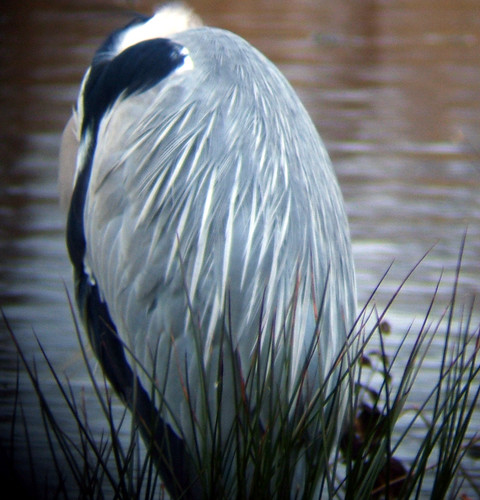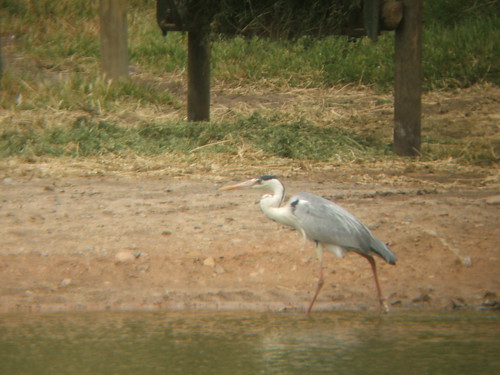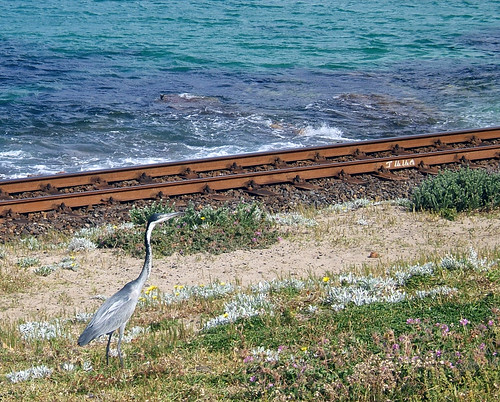
For fishkeepers the grey heron can be a feared pest but this need not necessarily be so. It is sometimes said that a plastic immitation heron will put off the real thing as they do not like to fish together yet herons live in large colonies and can often be seen in groups at the water's edge. If your pond is for fish only such as koi then making it steep sided with no margin will help. This is not so friendly for wildlife though. Another option (which we use) is to string fishing line over the water a foot in. This gets in the heron's way has he tries to enter the margin to fish and blocks his line of attack to stab down whilst standing the edge of the pond. Unless you are keeping expensive fish like koi carp another option is of course to enjoy watching the food chain of your garden and pond develop and know that fish like goldfish and rudd will in a reasonable size pond tend to breed faster than the heron will eat them. This picture was taken using my Fuji f810 through my binoculars at a nature reserve in South Africa.  The small water hole had been stocked with Tilapia a rapidly breeding cichlid species and the herons and cornmorants were having great fun eating them. Although grey herons are often thought of as fish-eaters they have wide tastes and will eat water voles, rats and other small mammals, amphibians and reptiles and even water birds such as moorhens if they can catch them. I took this picture of the black-headed heron, Ardea melanocephala, in Simonstown, South Africa as he ambled along the railway tracks stalking small lizards with the blue waters of False Bay behind him.
The small water hole had been stocked with Tilapia a rapidly breeding cichlid species and the herons and cornmorants were having great fun eating them. Although grey herons are often thought of as fish-eaters they have wide tastes and will eat water voles, rats and other small mammals, amphibians and reptiles and even water birds such as moorhens if they can catch them. I took this picture of the black-headed heron, Ardea melanocephala, in Simonstown, South Africa as he ambled along the railway tracks stalking small lizards with the blue waters of False Bay behind him.
Wednesday, January 18, 2006
The Grey Man
The grey heron (Ardea cinerea) was sometimes referred to in the old days as the grey man. When you see one hunched over with its head out of the wind along a lonely bank in autumn mist you can see why. Whenever I see one fishing along the drains of Lincolnshire it reminds me of my grandfather stooping whilst fishing for some reason. When I tried to take pictures of this one it was so snug and hunched I couldn't get a shot of its head, beak or eye no matter what angle I tried. As I went through the photos I was going to delete them but for some reason this one reminds me of the story of the grey man and my grandfather so I decided to keep it.
Labels:
Wind
Subscribe to:
Post Comments (Atom)
No comments:
Post a Comment